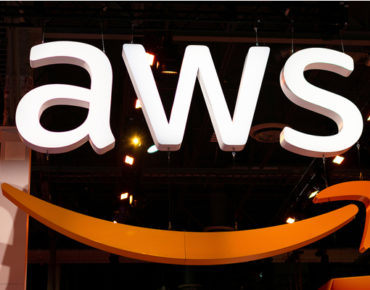AWS Shuffles Execs, 23-Year Veteran Charlie Bell is Out as New Leadership Takes the AWS Reins

A month after Andy Jassy left the CEO’s post at Amazon Web Services (AWS) in July to replace Jeff Bezos as the CEO of Amazon, some notable changes are already coming to the AWS leadership team.
Charlie Bell, who spent 23 years at AWS, including the last 15 years as the senior vice president of AWS services, is out at the company and has been replaced by another AWS senior vice president, Peter DeSantis, according to an Aug. 9 report by CNBC.
Bell was managing the utility computing division, which DeSantis will now lead, the story reported, according to a source who is familiar with the matter. DeSantis previously was tasked with global infrastructure duties.
In another move, another AWS vice president, Prasad Kalyanaraman, will now be responsible for infrastructure and network services at the company, according to the unnamed source.
Both DeSantis and Kalyanaraman will report to AWS’s new CEO, Adam Selipsky, who returned to Amazon earlier in 2020 after five years spent as the CEO at Salesforce-owned Tableau Software, the story continued.
A spokesperson for AWS confirmed the executive moves but declined to comment when asked about the changes in an email from EnterpriseAI.
Bell joined Amazon back in March of 1998, according to his LinkedIn profile, becoming Amazon’s director of software engineering after the company where he worked, Server Technologies, was acquired by Amazon.com. Soon after he was tapped to lead a new internal organization that combined systems engineering, database engineering, networking and datacenter operations into a single infrastructure organization.
In 1999, he was promoted as a vice president, responsible for supplying Amazon's decentralized software teams with the company’s common technology infrastructure. “He was tasked with ‘Get Big Fast’ during the most rapid growth days of Amazon's history,” the LinkedIn profile states.
By 2003, he was leading the company’s transaction platform, which included all shared services that supported both Amazon's own retail business and third-party merchants, including Target, which had their own websites while also selling on Amazon's website.
He moved from there in 2006 to take on the AWS services leadership role, growing the AWS business from initial S3 and EC2 cloud computing offerings to the broad range of cloud services offered by the company today, with a trailing twelve-month revenue run-rate of more than $50 billion.
Amazon Without Bezos
When Amazon announced in February that Jassy would be leaving AWS to head Amazon, the big question was what would the parent company, Amazon, be like without its founder, Bezos, at the helm?
Now, that same question can be asked about what will AWS be like without Jassy at the helm?
The answer appears to be that it will be different now that executive changes are in the midst.
Bezos started Amazon in 1994 from scratch as an online bookseller on the then-nascent internet. Bezos and his team have grown the company into the Godzilla of cloud and online retail, usually beating up competitors in its broad wake.
In handing over the reins of the entire company to Jassy, who joined Amazon in 1997, Bezos said in a letter to employees that he will be turning his attention full-time to new products and early initiatives within the company.
Under Jassy, AWS in December 2019 unveiled its Arm-based Graviton2, second-generation, 7nm AWS cloud processor chips for work with AI, machine learning and other HPC workloads. The chips were Amazon’s entry in a crowded marketplace that is also populated by Google’s TPU v4 chips and silicon from a myriad of other vendors. AWS included the ground-breaking chips in its first Graviton2 Arm-based EC2 instances in June of 2020 as part of the sixth-generation Amazon EC2 C6g and R6g instances.
Analysts on the AWS Leadership Changes
Several IT analysts told EnterpriseAI that they are not surprised by the leadership changes at AWS in the wake of Jassy’s move and the arrival of new CEO Selipsky.
“AWS has long commanded, and enjoyed, a huge chunk of market share in the cloud space,” said Shelly DeMotte Kramer, principal analyst and founding partner with Futurum Research. “But over the last several years, others have squarely planted their flags there and have invested heavily to grab a share of the market. Vertical market focus, partner ecosystems, strategic alliances — all these things are in play and are clearly having an impact. But it is not just the big players; it is IBM, Oracle, Salesforce, Alibaba, Tencent and a host of others.”
All of this is putting AWS on notice that they needed to “shake things up, which often signifies a change in leadership,” said Kramer. “I think that in this market reality, combined with a new CEO coming into the equation, that every leader brings with them their own personal 'A' teams, or folks they've relied on along the way. To see [Selipsky] making this change, at this point, is not at all surprising. I think it is likely a 'let's shake the cobwebs out and ramp this thing all the way up' move.”
Another analyst, Rob Enderle, principal of Enderle Group, said the executive changes certainly reflect the arrival of the company’s new CEO, Selipsky.
“A new CEO will often rethink their team and remove those they feel are not supportive enough or who are underperforming, and both may have been the case here,” said Enderle. “A new CEO who does not assure loyalty and competence early on will undoubtedly fail. I would suggest this is an indication that [Selipsky] knows this and is working to assure his tenure is successful.”
The rise and fall of executives inside companies is always fraught with uncertainty, he said. “I think Bell rose beyond his competence which was showcased by his performance. As you rise through an organization, the skills needed shift from personal accomplishments to organizational politics, command and control, becoming more strategic than tactical. Without heavy mentoring, many fail during this rise due to a lack of skills or interest in the changing job requirements.”
Interestingly, Synergy Research Group announced new research July 29 on the cloud marketplace which shows AWS firmly continuing to maintain its lead in the segment again Microsoft Azure and Google Cloud Platform. The study placed Q2 2021 global enterprise spending on cloud infrastructure services at $42 billion, which is up by $2.7 billion from the previous quarter and up 39 percent from the second quarter of 2020.
In previous quarters Microsoft and Google had been slowly gaining ground on AWS, but Amazon’s worldwide market share nudged back up to 33 percent after a 10 percent increase in the previous quarter, according to the Synergy report. Microsoft and Google combined accounted for 30 percent of the market, with the next 20 cloud providers combining for another 28 percent of the market.
None of this is causing AWS to lose any sleep, said John Dinsdale, chief analyst at Synergy Research Group.
“I cannot imagine AWS being a bit nervous – that is just not in its genes,” he said. “[The company] takes a long-term view of the market and it has a laser-like focus on clients and what is good for them. It has such a strong culture that any staffing change, however senior, will have little or no impact on AWS plans and performance.”
While Microsoft and Google have been steadily narrowing the gap between themselves and Amazon, the changes are relatively small, said Dinsdale. “Over several years Amazon’s share of the total cloud market has been remarkably stable in the 32 to 34 percent range, and in the second quarter it nudged back up to 33 percent,” he said. “It is not losing ground. The market share gains of Microsoft and Google have come at the expense of other, smaller cloud providers.”
















